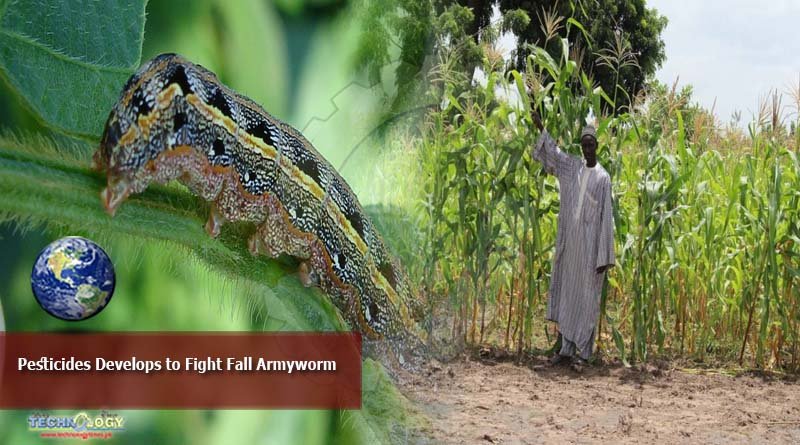Two pesticides developed from natural sources are being commercialised for controlling the destructive fall armyworm following their effectiveness against the immature form of the destructive moth, scientists say. Fall armyworm is a serious threat to food security and livelihoods in Sub-Saharan Africa.

For instance, its infestation causes maize yield losses of up to 11.6 per cent in Zimbabwe, 26.6 per cent in Ghana, 32 per cent in Ethiopia, 35 per cent in Zambia and 47 per cent in Kenya, according to the International Centre of Insect Physiology and Ecology (icipe), which created the two pesticides from natural sources including fungi, bacteria and plants.
“Through icipe‘s well-established public-private sector partnership with a local company, Real IPM Ltd in Kenya, icipe 78 and icipe 7 among several other isolates were identified as effective against several pests and commercialised [in Kenya],” says Sunday Ekesi, director of Research and Partnerships at the icipe, in an interview with SciDev.Net last month (31August).
Ekesi adds that the two pesticides that are proving effective against fall armyworm’s eggs and the immature stages took between 24-36 months to develop after screening many isolates from fungi and testing them against fall armyworm.
According to a statement issued by the icipe last month 47 African countries are battling fall armyworm.
In Uganda, and across Africa, safe and efficacious bio-based innovative solutions are urgently needed to help tackle the enormous challenges to food and nutritional security of our people posed by the destructive and highly invasive cryptic insects like the fall armyworm and locusts,” says Elioda Tumwesigye, minister for Science, Technology and Innovation, Uganda, in the statement.
Ekesi says that the economic loss resulting from the destructive pests in only 12 maize-producing Africa countries including Benin, Cameroon, Ethiopia, Ghana, Malawi, Nigeria, Tanzania, Uganda and Zimbabwe could be up to US$6.3 billion a year.
“This, coupled with other factors such as climate change, drought and social instability, is likely to push millions of smallholder families into food insecurity,” he explains.
“Biopesticides have numerous advantages: they do not leave toxic residue on produce, they pose minimal risk to the health of people and the environment, and they are less likely to induce pests and disease resistance,” the statement adds.
But Ekesi explains that the lack of increased awareness among smallholders on biopesticides, their efficacy, mode of action and benefits is a challenge to controlling fall armyworm.
“Despite the scientific progress in the development of biopesticides for managing pest, stringent regulations continue to restrict the introduction of microbials due to lack of harmonised policies and regulatory frameworks that support the development of biopesticides products,” Ekesi adds.
Scientists, the private sector and development partners should foster collaborative business development models to support products and value chain development for biopesticides manufacturing to facilitate local availability and use.
“Biopesticides have high potential impact for controlling fall armyworm in Africa,” adds Roger Day, programme executive, Action on Invasives, Centre for Agriculture and Biosciences International (CABI, the parent organisation of SciDev.Net).
Day says that farmers often avoid using them because biospesticides usually do not kill pests fast enough.
Originally published by SciDev
